- News
- Reviews
- Bikes
- Accessories
- Accessories - misc
- Computer mounts
- Bags
- Bar ends
- Bike bags & cases
- Bottle cages
- Bottles
- Cameras
- Car racks
- Child seats
- Computers
- Glasses
- GPS units
- Helmets
- Lights - front
- Lights - rear
- Lights - sets
- Locks
- Mirrors
- Mudguards
- Racks
- Pumps & CO2 inflators
- Puncture kits
- Reflectives
- Smart watches
- Stands and racks
- Trailers
- Clothing
- Components
- Bar tape & grips
- Bottom brackets
- Brake & gear cables
- Brake & STI levers
- Brake pads & spares
- Brakes
- Cassettes & freewheels
- Chains
- Chainsets & chainrings
- Derailleurs - front
- Derailleurs - rear
- Forks
- Gear levers & shifters
- Groupsets
- Handlebars & extensions
- Headsets
- Hubs
- Inner tubes
- Pedals
- Quick releases & skewers
- Saddles
- Seatposts
- Stems
- Wheels
- Tyres
- Health, fitness and nutrition
- Tools and workshop
- Miscellaneous
- Buyers Guides
- Features
- Forum
- Recommends
- Podcast
feature
 Woman cycling in Hyde Park (copyright Simon MacMichael)
Woman cycling in Hyde Park (copyright Simon MacMichael)Guide to cycling to work — beat the cost-of-living crisis and feel healthier and happier commuting by bike
If you didn’t know already, cycling to work can save you a lot of money compared to using a car or public transport – and as the squeeze on our incomes due to inflation and high interest rates continues to hit hard, there’s no better time to start reaping the benefits for your health and your bank balance. Aimed at people considering cycling to work as a way of helping them get through the cost-of-living crisis but who do not regularly ride a bike currently, in this feature we’ll be looking at what you need to consider before setting out on your first two-wheeled commute.
While we will be pointing you towards some of our buyer’s guides and other features related to commuting, with the choice of bikes and other bits of kit often daunting to newcomers, the prime focus here is getting you started.
Financial (and health) benefits
First, it’s worth stressing that the benefits of cycling to work aren’t just financial (although the latter is of course significant).
For instance, it’s well-documented in studies that people who travel to work by bike are less stressed and more productive while they are there, and are generally happier all-round, even when away from the workplace.
That will partly be due to those endorphins your body has released while you’ve been pedalling, and also because unlike some of your colleagues you will not have spent the first part of the morning stuck in a frustratingly slow queue of motor traffic, or pressed up against a stranger’s armpit on a packed train.
Then there are the health benefits, too, with research showing that people who undertake regular aerobic exercise such as cycling to work enjoy better cardiovascular health and greater longevity. And one study suggested that an hour spent cycling adds up to another hour added to life expectancy.
Your two-wheeled commute will therefore not just save you money – it will also make you healthier, and depending on how long your commute is, it will likely save you a chunk of time, too. What’s not to love about that?
Myth-busting
So, you’ve decided you want to give cycling to work a bash. What next? Well first, let’s dispel one myth – there is no ‘right’ way of commuting by bike, and you do not have to splash out a fortune on kit to get started.
Admittedly, cycling can be very confusing for anyone who is new to it. There’s a whole new terminology to master, and you might also be forgiven for thinking some kind of uniform is needed – Lycra jersey, padded shorts, and a cycle helmet, etc, but we’ll let you into a secret; to begin with at least, none of that matters.
What to ride
You don’t even need to have your own bike nowadays, given the wide range of hiring options that are available in many towns and cities these days, and which may be of interest given you’re looking at changing to a bike for your commute to save money.
Those include local authority-run schemes, such as Santander Cycle Hire in London, with similar initiatives available elsewhere across the country as well as e-bike schemes from the likes of Lime and Dott, each of which enable you to hire a bike for a few quid to try out your commute and perhaps deciding to splash out on your own bike.
Other options include the Brompton Dock scheme which enables you to hire the iconic folding bikes from lockers in locations typically found close to transport hubs, or subscription models such as Swapfiets, which originated in the Netherlands and under which bikes can be hired on an ongoing basis at prices starting from less than £20 a month.
If you already have a bike, you may want to get it serviced at your local bike shop before hitting the road on it again, especially if you haven’t used it for a while.
And should you already have decided that yes, you are 100 per cent going to switch to a bike for your commute and are going to buy a new one for it, check with your employer whether they are signed up to the long-running Cycle To Work Scheme.
Based on salary sacrifice, this initiative, launched in 1999, has over the past quarter century or so enabled tens of thousands of people to buy a bicycle and other equipment – lights, locks, even clothing – while spreading the cost and enjoying tax breaks and thereby a significant saving compared to purchasing upfront.
And while it has always been attractive to people planning to get a new bike, it is likely to be doubly attractive given the income squeeze.
> How to save money on a bike with a Cycle to Work scheme
If you have decided to buy your own bike, the next decision you need to make is what kind of bike you want; just as there are horses for courses, there are definitely different bikes for different tasks.
Fast, sometimes twitchy road bikes with drop bars and narrow tyres, gravel bikes that may look similar to those at a casual glance but which can handle much tougher terrain, sit-up-and-beg Dutch-style bikes, perhaps with a basket on front, folding bikes that have the advantage of being easy to store at home or at work (and which can also be taken on rush-hour trains if need be), flat-bar hybrid bikes that perform a variety of roles are just some of the options open to you.
Here, your local bike shop can help you, with staff listening to what you need the bike for (you may be buying it primarily to commute but trust us, once you have the bug you will use it for a whole host of other reasons) and making recommendations accordingly.
True, some people do find bike shops intimidating, and the occasional story of a potential customer being ignored or talked down to by a member of staff does emerge on social media, but on the whole you will find people there friendly, helpful and full of good advice – including on other essentials you’ll need to buy besides the bike such as lights, which are a legal requirement in hours of darkness, or a lock to protect your new pride and joy from thieves.
On that subject, even if your workplace has secure cycle parking, make sure you familiarise yourself with how to lock your bike up properly – and don’t forget to take your lights with you when you leave it, since they can often be tempting to the light-fingered. Most lights these days are rechargeable via USB, meaning you don’t have to worry about batteries, and can easily charge them while at your desk.
What to wear
Despite what some people seem to think, neither hi-vis clothing nor cycle helmets are compulsory within the UK, although the Highway Code does recommend the latter, and also says that “light-coloured or fluorescent clothing can help other road users to see you in daylight and poor light, while reflective clothing and/or accessories (belt, arm or ankle bands) can increase your visibility in the dark.”
In both cases, it’s a matter of personal choice. If you do decide to wear a helmet, ensure it is the correct size and the straps are adjusted properly to ensure a secure fit.
And while you will often see people wearing a cycling cap beneath a helmet, especially when it is cold or wet, resist the temptation to wear a helmet on top of something like a bobble hat – not only will it look silly, but you’ll also have little protection and it can also be dangerous in the event of a crash.
Beyond hi-vis and helmets, you could go out on day one dressed like you are about to take to the start line of the Tour de France – or you could just wear something that makes you feel comfortable in the saddle and which is also practical for riding a bike.
It’s early days in your cycling journey, so our advice would be to go for the latter, and avoid garments that may flap around in the wind, get caught in your chain or wheels, or over your rear light when riding at night.
Increasingly, and this is perhaps particularly noticeable in London, you’ll see more and more cyclists wearing ‘normal’ clothes – so, no tight-fitting, brightly-coloured jerseys, or figure-hugging Lycra shorts, but rather jeans, trousers, shirts and jackets that are equally suitable for riding to work and for wearing once there.
In many cases these will be designed specifically for cycling, with brands such as Rapha having a long history of producing garments suitable for commuting or everyday cycling, as well as the more sporty clothes they are also known for, with cycling-specific touches such as hi-vis tabs, zips on pockets to keep your valuables safe, and the like, and we’re also seeing high street brands such as H&M and Zara developing cycling ranges that also look equally good off the bike.
Many people on longer commutes especially will wear what is generally thought of as cycle clothing, for comfort and practicality, but for shorter journeys especially, everyday clothes aren’t a problem, and you can always build up more of a bike-specific wardrobe as you go along.
One early purchase we would recommend though, is a jacket for when it rains, which despite the British weather perhaps happens less often on a bike commute than you might assume.
> Best waterproof cycling jackets 2023 — get out on your bike whatever the weather
You may also consider keeping a dry change of clothes at work for days when it does hose it down, and if you have a spare drawer in your desk, could also think about bringing in a week’s worth of shirts and the like on a Monday, and take them back for laundry on the Friday.
In time, you could also consider things such as pedals you can clip into, which make your pedalling more efficient, as well as perhaps a bike computer to record your rides (although an app such as Strava on your smartphone can handle that job too, at least to begin with).
We’d also recommend having a look at the Highway Code and in particular the rules as they apply to cyclists – even if you drive, it is worth having a refresher, given that many of the rule were revised last year to try and make the streets safer for people on bikes, as well as pedestrians. Be vigilant, though – don’t assume that all the drivers you encounter will have read them.
Where to ride
Next to consider is the route that you will take to work, which of course will very much depend on where you live and where you are heading to. Increasingly, Britain’s towns and cities have dedicated cycle infrastructure, with some of the kerbed lanes, physically separated from motor traffic, being as good as anything you might find in countries such as the Netherlands.
Elsewhere, you may also be able to use quiet routes through parks or along river or canal towpaths, although the quality of the latter can at times be sketchy and it is definitely worth familiarising yourself with your planned route, perhaps by riding it at the weekend ahead of your first commute.
Depending on where you live, your local council’s website may have details of local cycle routes, and you should also check out the site of your local cycle campaign group as well as sites such as Cycle Streets to help plan your route.
Campaign groups may also run ‘ride buddy’ programmes where you get paired with someone who rides a similar route to you and who can share their knowledge with you while you get familiar with it. It may also be worth investigating the availability of cycle training in your area – which in many places is provided free by the local authority as they seek to encourage more people to switch to active travel to get to work.
Many junctions nowadays have ‘bike boxes’ (in official parlance, ‘Advanced Stop Lines’) marked with the outline of a bike and which enable you to get ahead of motor vehicles while waiting for the lights to change, but one piece of advice – NEVER be tempted to go up the inside of a bus or lorry waiting in the left hand lane, with large vehicles turning when the driver has not spotted a cyclist being involved in a disproportionate number of fatal collisions in London over the years.
One of the delights of cycle commuting is the ability to vary your route depending on your mood, the weather conditions, or what have you. Many years ago, when I began commuting from Greenwich into the centre of London, advice from seasoned commuters on the various forums that were then in their infancy was to take the direct route along busy roads and yes, I would do that occasionally, especially if I’d left home a little late.
More often than not, however, I would follow the Thames Path, using quiet streets and long stretches that were entirely traffic-free, the trade-off being that it would take me maybe five or 10 minutes longer to reach my destination (well, perhaps slightly longer if I stopped for a coffee somewhere with a river view – a great way to start the day).
And even though I no longer live in Greenwich, and my commuting days are long over, I still love the Thames Path, often riding down to Hammersmith (pictured above) from where I now live in West London.
How to carry stuff
Another issue to think about is how to carry stuff that you may need to take to work on your bike – laptops and the like (complete with charger), toiletries, a rain jacket, and perhaps some fresh clothes to change into at work.
Many people will opt for a backpack or rucksack, and while there are plenty of cycling specific options available they can have the disadvantage of leaving your back damp and sweaty once you arrive at your destination.
> Best cycling backpacks 2023 — carry your stuff the easy way
> Cycling luggage for beginners: find out the best ways to carry stuff on your bike
Alternatives include panniers, which can be used singly or in pairs and attach to the bike via a rear rack, which may need to be bought separately, or a basket or some other kind of carrying tray on the front of the bike (in which case it is also worth having a bungee cord or something similar to help secure any bag you are carrying, not just to prevent it from jumping out if you hit a pothole, but also to thwart any ne’er-do-well on a moped who might be tempted to snatch it).
Happy riding!
Hopefully all that talk of rain and locking your bike won’t have put you off – there really is nothing better than getting to work under your own steam, and once you’ve done it a few times you will wonder why you never thought of doing it before, and will also likely need to be dragged kicking and screaming back into undertaking the trip the way you did before.
And not only will you be feeling happier and more healthy, but you’ll see the benefits in your bank account too as the pounds begin to add up – some of which, we should perhaps warn you, is likely to be siphoned off to buy new accessories for your bike, or to build up a cycle clothing wardrobe.
Happy riding – once you start, you’ll never look back!
What are your top cycle commuting tips? Let us know in the comments for the next update of this article
Simon joined road.cc as news editor in 2009 and is now the site’s community editor, acting as a link between the team producing the content and our readers. A law and languages graduate, published translator and former retail analyst, he has reported on issues as diverse as cycling-related court cases, anti-doping investigations, the latest developments in the bike industry and the sport’s biggest races. Now back in London full-time after 15 years living in Oxford and Cambridge, he loves cycling along the Thames but misses having his former riding buddy, Elodie the miniature schnauzer, in the basket in front of him.
Latest Comments
- teckert 5 hours 37 min ago
You can see the effect of a 'way too late' opening of this comp, with my dismal results! Wrecked a good start to my season.
- IanMunro 6 hours 35 min ago
It was off my list of helmets worth buying as soon as I saw someone had named it "Game Changer".
- mark1a 8 hours 3 min ago
Looks valid to me although on a black Mercedes C Class. Last V5 issued 25th April (2 days ago) so maybe plate was being transferred.
- Sam3 11 hours 26 min ago
Asked for comment, a representative of the biker community said: "We are realigning our expenditure better reflect our strategic priorities and...
- Sam3 11 hours 31 min ago
So highly overpriced items such as "premium bike clothing" and overpriced "premium" bikes that no one NEEDS....suffer a disproportionate...
- chrisonabike 13 hours 42 min ago
Well good for Yate! Looking on Street view the 2021 pictures suggest nothing less than a genuinely "massive" amount of cash * will help. That...
- Blackthorne 14 hours 51 min ago
Well Paddy Murray seems to have been nicely rewarded for his efforts to drive Stages into the ground.
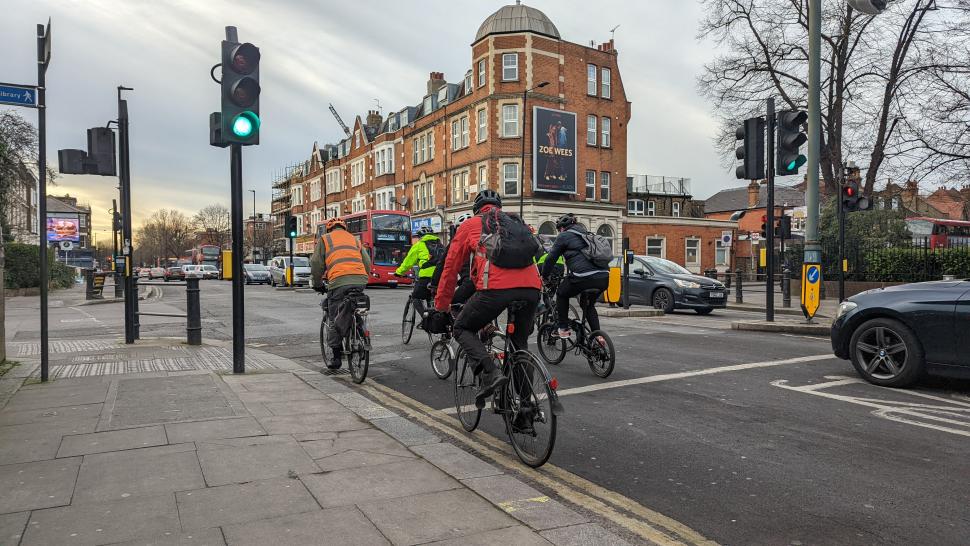
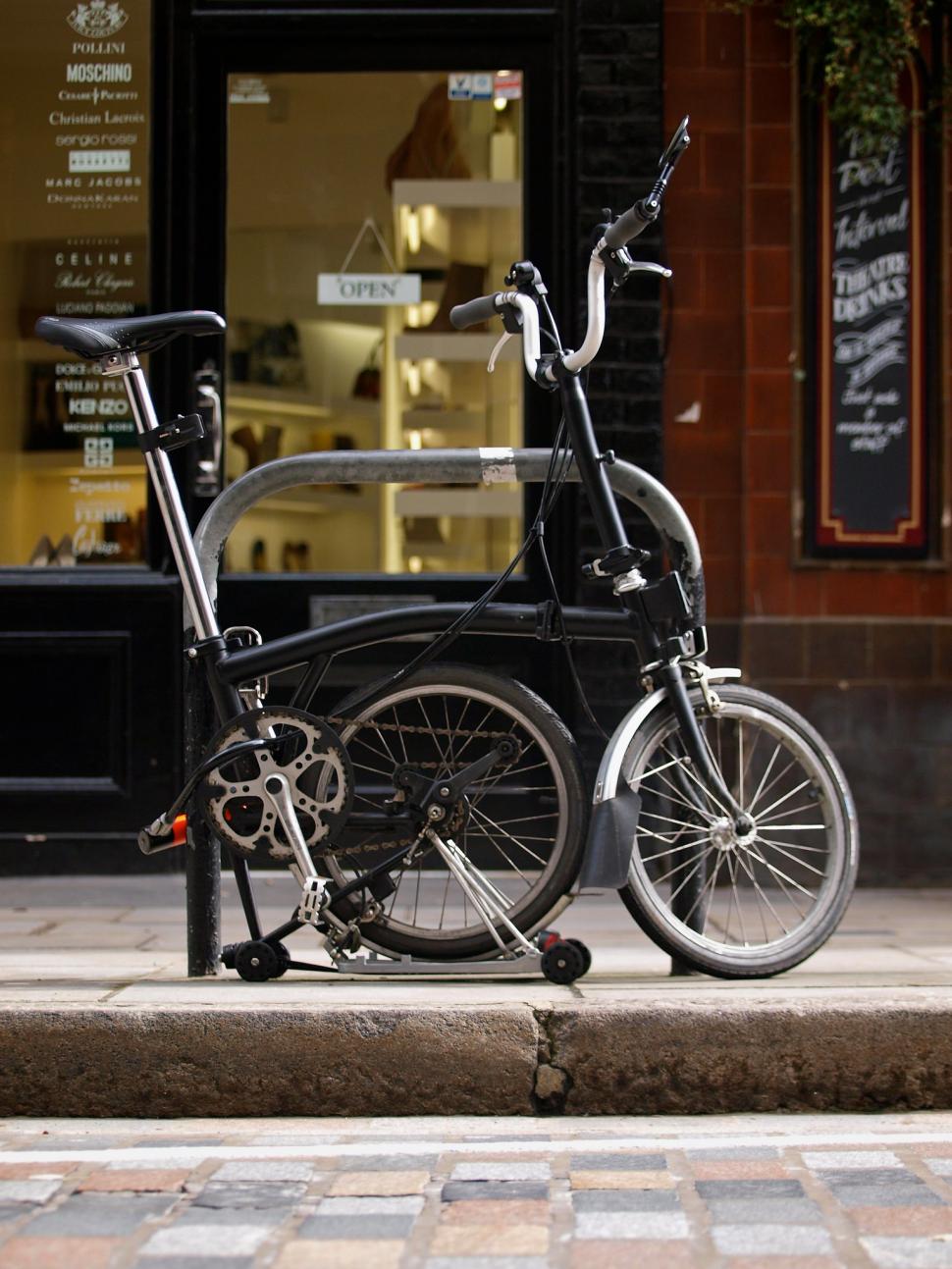
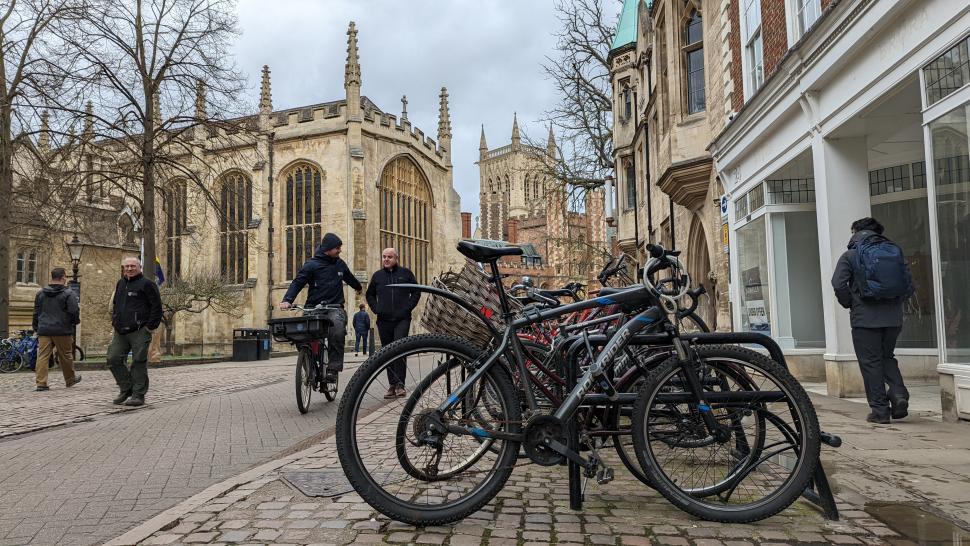

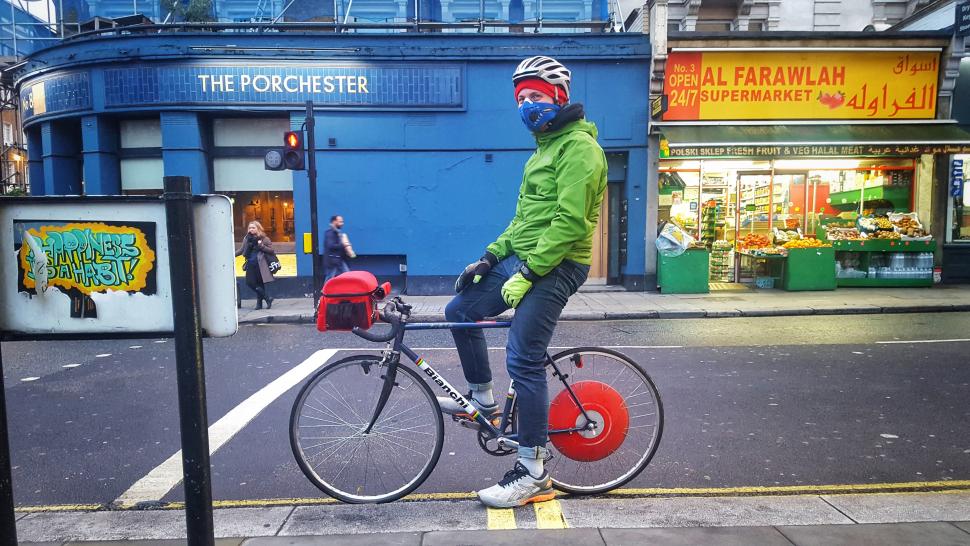
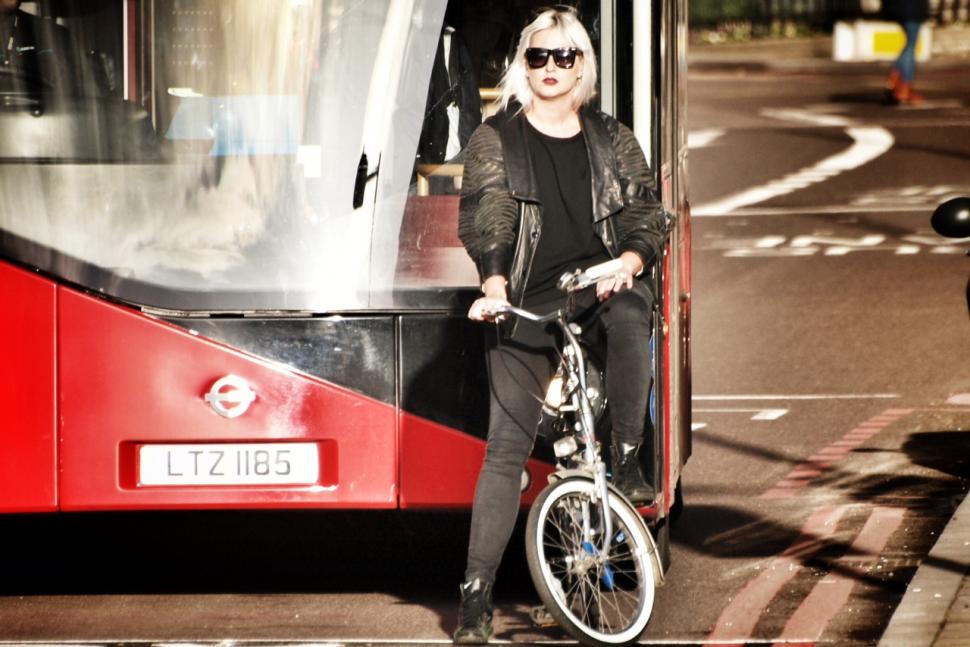



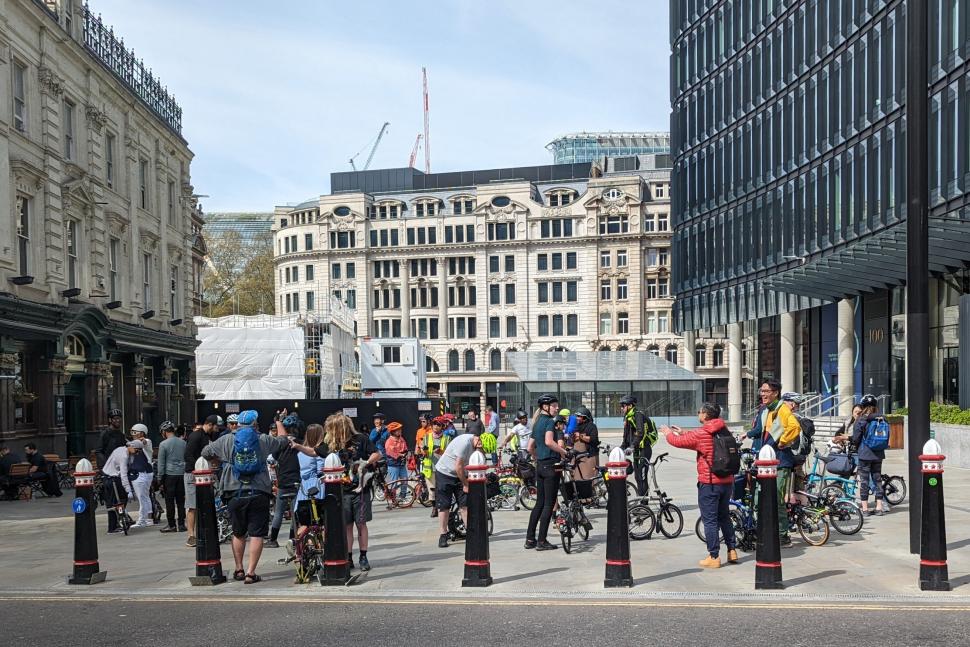
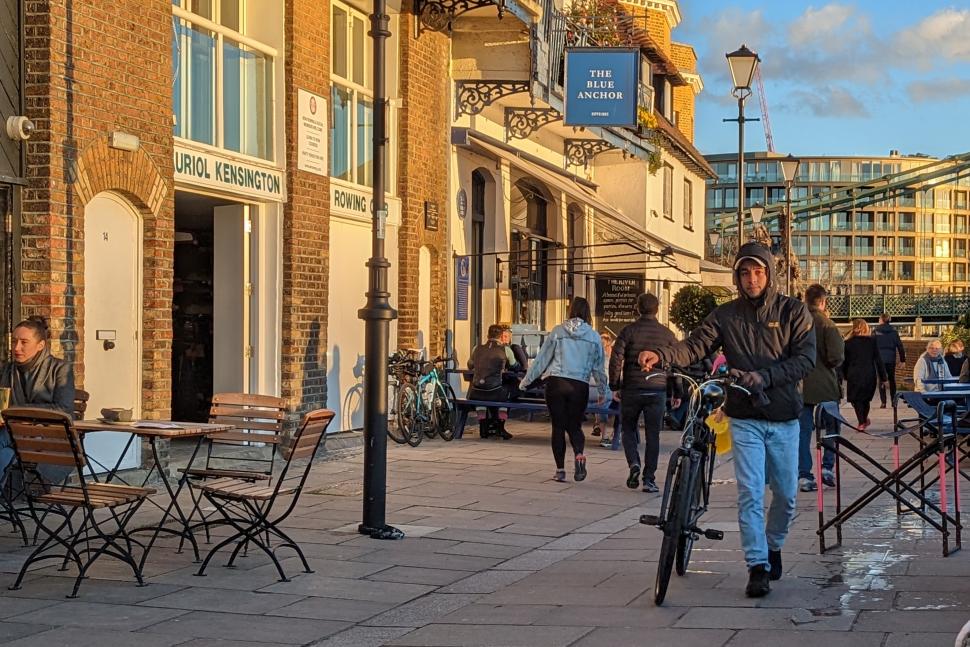
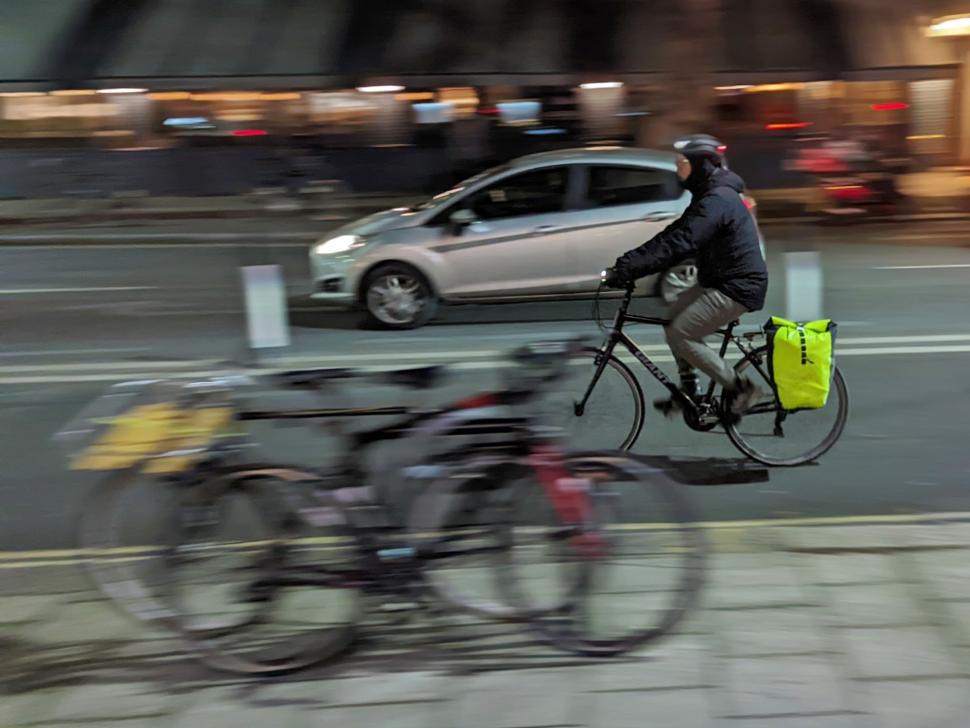


Add new comment
11 comments
Get one of these models !
https://davewalker.com/category/diagrams/odd-bikes/
In my case I still kept spending.. 5-8 different sizes and styles of bags to carry things in. 20-30 odd different front and rear lights for every day of the month. 10 pairs of mitts for every day of the week and spares if those get shredded. 20-30 pairs of autumn/winter or waterproof gloves because I was trying to find the right ones for the right temperature that suited me and worked...
multiple Jerseys (for every season) ....Gilets, Jackets, hats, padded shorts, helmets...
You end up getting so many of these on a whim or impulse because they look fancy or shiney which eventually does lead to an N+1 and then another....
And eating more. You'll be plagued by the feeling of hunger for food.
Its a disease.
Seconded on food: I eat so much more food than I ever did when I was commuting on the bus.
A disease transmitted by websites like this 'un!
Innoculation with poverty is the cure recommended by society at large, these days; but if you still have dosh to be extracted an alternative cure is the adoption of a scepticism bordering on cynicism for all things-advertised (including the adverts labelled "review", "test" or "news").
As to the excessive grub-snortling .... the trick is to get quite skinny by cycling and not eating more than you used to, as eventually an equilibrium is reached where what you eat is enough to power your legs from A to B as you need less energy because your lower weight means the hillocks are easier.
Of course, some will need to go down to just 6st 3llbs, so a sidewind will blow them over as they pass the gap in the hedge. ........
Another benefit, albeit an unusual one, is consistency. While my driven commute was very much at the mercy of traffic jams caused by collisions, my cycling commute takes me the same time every time.
Executive summary (or TL:DR):
1. Buy bike
2. Ride to work
3. Work
4. Ride home
5. Repeat from 2.
I'm not keen on number 3.
Quite. Best replaced with: hang about feeling exercised-smug but performing pleasurable playful actions of merit in achieving something useful, unlike most work.
I vaguely recall an article about a-one o' them city cycle couriers (do they still have 'em?) going about on a fixie delivering "packages". The courier greatly enjoyed the cycling and all its associated benefits that are familiar to us all here .... but detested many of those he delivered to, delivered from and sometimes what was delivered. He even enjoyed jousting with the traffic.
Perhaps the ideal job is one in which the cycling takes up 95% of the time and the "work" is hardly noticeable. We used to have a village bobby-on-a-bike who had that job but the powers-that-be found out and scrapped it.
You missed "Actually enjoy the journey"
I prefer the journey when everybody else is already at work/home/school
Quite wonderfully, mine is mostly off road.